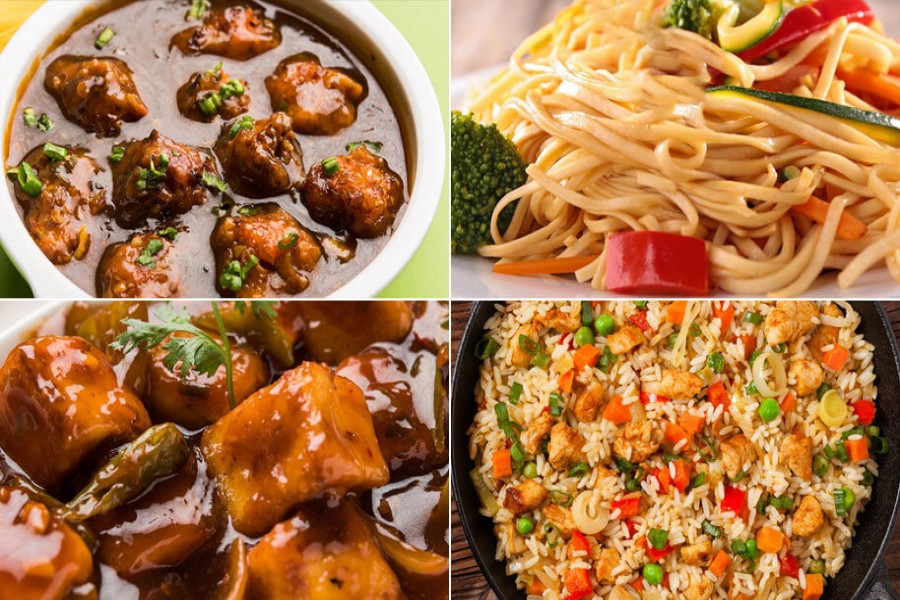As a symbol of heritage and identity, food plays a diverse appeal of flavour which remains unique to a specific race, place or people. Through the pages of time, the culture of adapting different cuisine and giving it a familiar twist of taste has created a breathtaking culinary excellence, as well as unappetizing disaster.
Chinese Cuisine is thought to be the epicenter of this culinary art. Now, the question that comes into place is does the form of ‘Chinese’ we have come to know and love from local dine-ins and takeaways truly resemble and pay homage to the authentic culinary styles of China? Or is it an indulgent and imprecise combination of several cuisine relevant to our Deshi culture?
The adapted form of Chinese delicacies has deeply rooted itself into Bengali culture being a staple form of nostalgia for everyone since the 1980s. Remember those wholesome/delightful days, when our parents used to take us to the eminent Chinese tavern to celebrate little forms of happiness? We wish, we could go back in time for nostalgia's sake! Almost all millennials have the experience of going to their local Chinese dine-ins with family where they order the usual ‘Chinese Set Menu’ consisting of fried rice along with sides of fried chicken,’ Chinese vegetable, salad and ironically a starter of “Thai” soup with wontons. Though fried rice was first developed during the Sui Dynasty in China, our Deshi counterpart which we have come to be familiar with in our households falls more in line with the Malaysian fried rice style of Nasi Goreng. The sides of fried chicken are of American Southern origin. Meanwhile, the vegetable dish is a mixture of our Deshi techniques and spices along with the dish: Chinese Vegetable clear soup.
You probably know that the Chinese food from your go-to takeout spot isn’t traditional Chinese food. It’s heavily Americanised. Being the most populous country, the Chinese have an array of authentic cuisine that is incredibly varied and vastly different from one region to another. That means expanding your palate to the world of traditional Chinese food can be an adventure on its own. The most prominent regional cuisine in China are Anhui, Cantonese, Fujian, Hunan, Jiangsu, Shandong, Szechuan and Zhejiang. Chinese traditional dishes are famous for colour, aroma, taste, meaning, and appearance. Basing Chinese cuisine on a few five to eight dishes is a gross oversimplification.
Based on the raw materials and ingredients used, the method of preparation, and cultural differences, a variety of foods with different flavours and textures are prepared in different regions of the country. Many traditional regional cuisine rely on basic methods of preservation such as drying, salting, pickling, and fermentation. Seasonings such as fresh ginger root, garlic, scallion, cilantro, and sesame are widely used in many regional cuisines. Sichuan peppercorns, star anise, cinnamon, fennel, cloves, and white peppers are also used in different regions. Though most of these ingredients have congruent or similar substitutes, Chinese mushrooms, dried baby shrimp, dried tangerine peel, and dried Sichuan chilies are very uncommon in the relative spectrum of our Deshi alteration. Apart from spices, the greatest difference lies in the flavour and distinction is in their diverse use of sauces, vinegar, and wines: hoisin sauce, ground bean sauce, and yellow bean sauce. There are also different sauces preferred by regional cuisines, oyster sauce, fish sauce, and furu (fermented tofu) are also widely used. Vinegar also has a variety of different flavours: clear rice vinegar, Chinkiang black rice vinegar, Shanxi vinegar, Henghe vinegar, etc.
Perhaps, the most neglected part of our Deshi take on Chinese cuisine is its deserts. China is famous for its sugared delicacies ranging from Red Bean-filled Baozi to Tangyuan (Sweet Soup Balls). This is yet another adventure on its own which is yet to be given a Bengali twist of Deshi indulgence.
Despite such drastic contrasts between the two, the connectivity comes from countless memories of joyous occasions in weddings, birthdays, and achievement parties. According to Taha Yasir Talukdar, an intern at Cognita College Counselling, the aroma, visuals, and taste is an ambassador of nostalgia entangled in pockets of euphoria. The meaning that this food conveys cannot come to the simple terms of just taste, it exceeds emotions and comfort. “As a child, I still remember sneaking through the kitchen door, amidst all the aroma spreading across the apartment. I'd snatch a small piece for tasting while my mom would smile in all her blossoms,” says Taha. In the end, this is all that makes food more meaningful.
Though most people in our country adore Deshi Chinese food, they lack enthusiasm for the traditional and authentic version. Deshi Chinese food is mouth-watering; however, people should also know that authentic Chinese flavours are a must-try out as well. This way people will get to know about the origin of the utterly exciting taste of Deshi Chinese we all have come to know and love. Regarding which form of Chinese cuisine is better, it really boils down to the matter of personal preference. However, the offerings of emotional anecdotes of our Deshi adaptation and the endless voyage of flavour and diversity in the Traditional Chinese cuisine make both of them stand out in their significant ways.
The writer can be reached at [email protected]


